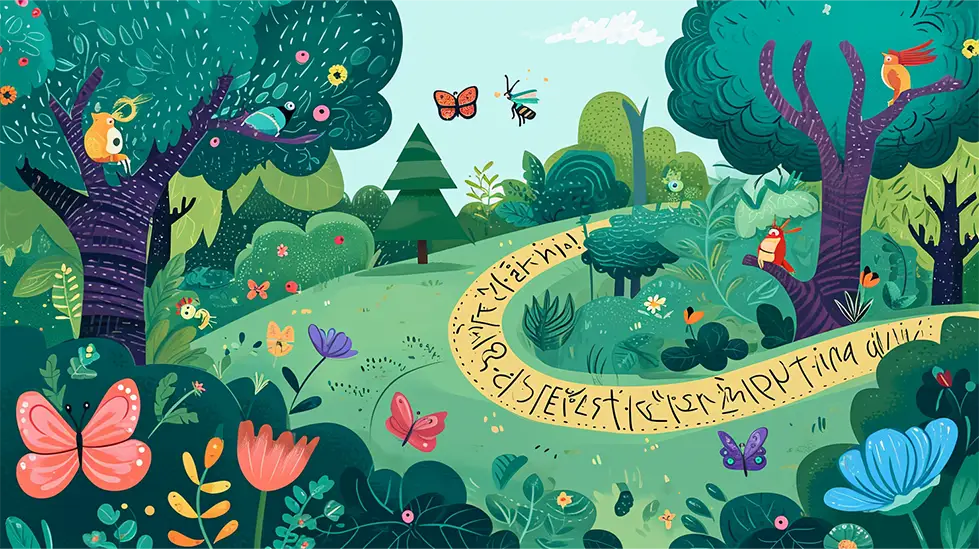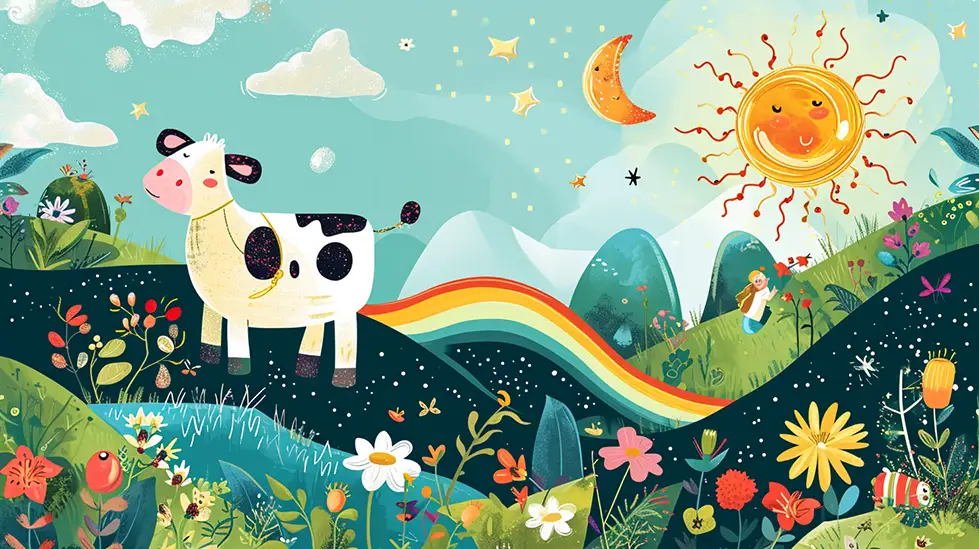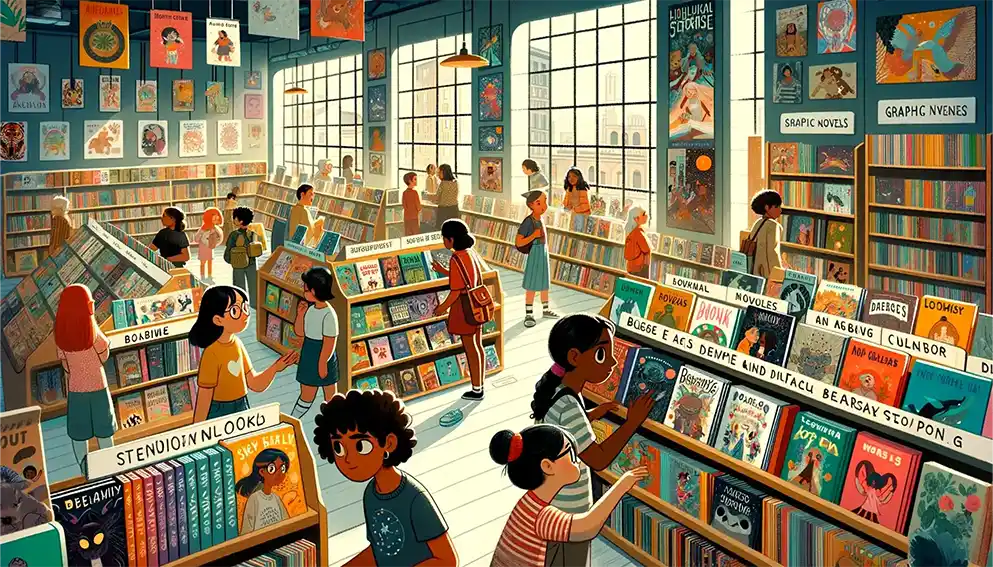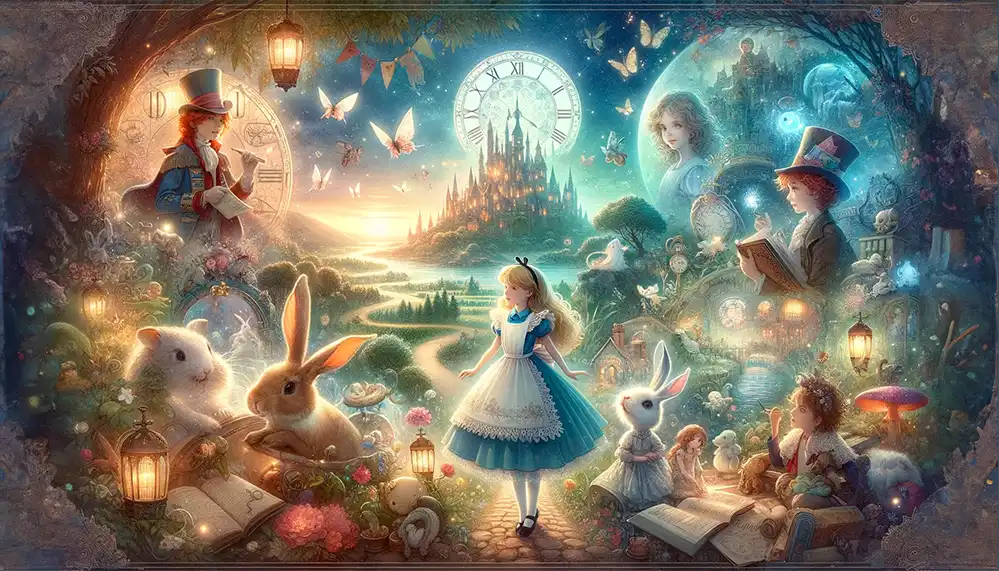Key Takeaways
- Children’s poetry and nursery rhymes are crucial for developmental milestones.
- They provide educational benefits, cultural significance, and contribute to social and emotional learning.
- Technological advancements and interactive media ensure that poetry remains engaging and relevant.
- Poetry in education and family settings fosters a culture of literacy and shared experiences.
Children’s Poetry and Nursery Rhymes
In the world of early childhood development, children’s poetry and nursery rhymes play a pivotal role in shaping young minds. These timeless pieces of literature do more than entertain; they are fundamental in enhancing linguistic skills, fostering emotional connections, and sparking endless curiosity. With origins that trace back centuries, nursery rhymes and poems for children carry a wealth of history and tradition—each rhyme and stanza tell stories that have been passed down through generations.

The Educational Value of Poetry and Rhymes
The cognitive and linguistic benefits that poetry and rhymes provide to children are invaluable. A child exposed to the rhythmic cadence of poetry and the repetition of nursery rhymes often displays advanced language skills and a heightened ability to grasp complex linguistic concepts. These literary forms serve as a fun and lyrical pathway to reading fluency, vocabulary expansion, and even the foundations of phonetic awareness.
Guiding development through Educational Children’s Books
| Aspect of Development | Influenced by Poetry & Rhymes |
| Phonemic awareness | Strengthened |
| Vocabulary | Expanded |
| Memory skills | Enhanced |
| Emotional expression | Encouraged |
Children’s poetry, when introduced early, can have a profound impact on a child’s academic journey, establishing the cornerstone for their future linguistic abilities.
The Power of Rhythm and Rhyme in Learning
Children are inherently drawn to the musicality and structure of rhythm and rhyme. These elements of poetry and nursery rhymes are not mere embellishments; they are core tools that aid in memory formation and retention. The predictability of rhyming patterns provides mental cues that help children anticipate and remember words, thus bolstering their retention and recall abilities.
- Rhythm: The beat and pace of the poetry captivate children’s attention and maintain engagement.
- Rhyme: Recognition of rhyming patterns promotes understanding of word families and sounds.
| Rhythmic Qualities | Contributions to Learning |
| Beat | Encourages participation |
| Pace | Maintains focus |
| Repetition | Aids memory retention |
| Patterns | Supports language skills |
The power of rhythm and rhyme is undeniable in aiding the learning process, setting the stage for a lifetime love of language and literature.
Famous Poets and Their Contributions to Children’s Literature
The realm of children’s literature has been graced by many famous poets whose work continues to delight and educate. Poets like Shel Silverstein, Dr. Seuss, and Roald Dahl have contributed a wealth of playful rhythms, clever rhymes, and imaginative worlds that are as entertaining as they are instructive. The significance of their work in the literary landscape cannot be understated; they have created portals to worlds of wonder, sparking imaginations and inviting children to the dance of poetry.
| Poet Name | Notable Contribution |
| Shel Silverstein | Whimsical and heartfelt verse |
| Dr. Seuss | Mastery of rhyming and pacing |
| Roald Dahl | Inventive language and stories |
These poets have left an indelible mark on children’s poetry, helping to lay the foundation for educational enjoyment across generations.
Discovering the World Through Poetry
Poetry opens up a universe of discovery for young readers. Children, through verses and rhymes, explore diverse themes—nature, emotions, adventures, and even the mundane can become fascinating through poetic expression. It encourages them to look beyond the surface, to imagine and understand the world in a new light.
Embrace the breadth of Classic Children’s Literature
| Poetry Themes | Worldly Discoveries |
| Nature | Appreciation of the outdoors |
| Emotions | Understanding of self |
| Adventures | Courage to explore |
| Diverse Cultures | Global awareness |
The exploration of life and its many wonders is made richer through the beauty of poetry, as it teaches children to observe, reflect, and dream.
Nursery Rhymes: More Than Just Entertainment
While nursery rhymes may seem simple on the surface, they represent much more than child’s play. These rhymes are embedded with cultural significance, often carrying lessons and morals that are passed down through the ages. They serve as tools for parents and educators to impart wisdom and values in a format that is easily digestible for children.
| Nursery Rhymes | Life Lessons Conveyed |
| Humpty Dumpty | Acceptance of consequences |
| The Itsy Bitsy Spider | Perseverance |
| Little Bo-Peep | Responsibility and care |
Cultural relevance and lessons learned from nursery rhymes resonate through childhood and beyond, proving that rhymes are more than mere amusement; they are a repository of life’s teachings.
Interactive Poetry for Modern Learning
In our ever-evolving digital landscape, interactive poetry converges with modern learning techniques to create an enriched educational experience. Interactive elements such as animated illustrations, spoken word performances, and touch-activated verses add a dynamic dimension to the reading experience, simultaneously entertaining and educating young minds.
Forge a path with Interactive Children’s Books
The joining of traditional poetry with contemporary technology is an exciting development in educational media, ensuring that the essence of poetry adapts and endures.
Encouraging Emotional and Social Learning Through Poetry
Poetry possesses a unique strength in fostering emotional and social learning in young readers. Through empathetic verse and expressive language, children can explore different emotions, understand varying perspectives, and build social awareness—all within the context of poetry.
Enhancing emotional intelligence through Children’s Books
| Emotional Aspects | Poetic Influence |
| Empathy | Gained from diverse voices |
| Expression | Encouraged by lyrical verse |
The emotional depth and social insights gained from children’s poetry are instrumental in the development of well-rounded individuals who can empathize, communicate, and connect with others on a deeper level.
Graphic Novels and Poetry: An Artistic Synergy
The blending of graphic novels with poetry forms an artistic synergy that resonates with visual learners. Graphic novels enhance the immersive experience of poetry, providing visual context to abstract concepts and heightening the emotional impact of the written word. This fusion of text and graphics attracts readers who may otherwise shy away from traditional poetry, drawing them into the rhythmic and illustrative world of verse.
Explore the visual art of Graphic Novels for Young Readers
Graphic storytelling paired with lyrical poetry creates a draw that is both visually compelling and intellectually stimulating, widening the gateway to literature for young minds.
Science in Poetry: Making Learning Fun
Science and poetry are often viewed as disparate disciplines, but in the context of children’s literature, they converge seamlessly. Science in poetry presents learning opportunities that are not only enlightening but also enjoyable. Rhymes involving the natural world, the human body, or technological feats introduce complex scientific concepts in a manner that is accessible and engaging to children.
Tap into the intrigue of Children’s Sci-Fi Books
| Scientific Themes | Poetic Presentation |
| Space exploration | Wondrous, exploratory verse |
| Ecology | Conservation-themed rhymes |
| Technology | Futuristic, imaginative stanzas |
The use of poetry to communicate scientific ideas makes learning about the natural and technological world fascinating, sparking curiosity and a desire to learn more.
Poetry and Inclusivity: Representing Diverse Voices
The significance of diversity and inclusivity is well understood in the realm of children’s literature. Poetry is a powerful vehicle for showcasing a multiplicity of voices and experiences, enabling children to hear stories from different cultures, backgrounds, and perspectives. This representation in poetry not only reflects the richness of our world but also instills values of acceptance and inclusivity in young readers.
Immerse in the stories of Diverse and Inclusive Children’s Books
Children’s poetry that celebrates diversity and encourages inclusivity helps to build a foundation for a more empathetic and understanding society, one rhyme at a time.
Poetry for Toddlers: Building Blocks of Language
For toddlers, poetry serves as the building blocks of language and communication. Simple verses that are easy to memorize and recite not only captivate the young listener but also introduce them to the rhythm and flow of language. Engaging toddlers with poetry establishes an early appreciation for words and can lead to more advanced linguistic skills as they grow.
A gentle introduction with Picture Books for Toddlers
By incorporating poetry into a toddler’s daily routine, we begin the journey of language acquisition and foster an early fondness for the literary arts.
Adventure and Fantasy in Children’s Poetry
Adventure and fantasy poetry opens a doorway to realms of imagination for children. These genres of poetry meld the thrill of adventure with the magic of fantasy, crafting a space where creativity soars and anything is possible. Rhymes that spin tales of far-off lands, mythical creatures, and daring quests capture the essence of childhood innocence and curiosity.
Embark on a poetic journey with Children’s Fantasy Adventure Books
The allure of adventure and fantasy in poetry excites the mind, inviting children to dream big and believe in the extraordinary.
The Joy of Reading Aloud: Poetry in the Family
Sharing the experience of reading poetry aloud within the family setting is a timeless pleasure that creates memories and strengthens bonds. This communal activity resonates with all ages and showcases the oral tradition of poetry. Reading aloud not only enhances comprehension and expression but also allows for shared interpretation and enjoyment of the poetic art form.
Tips for Reading Poetry Aloud:
- Vary your tone and pace for different poems.
- Encourage children to recite along with you.
- Discuss the feelings and images the poem evokes.
The joy of reading poetry aloud is a cherished activity that benefits every family member, creating lasting connections and fostering a shared appreciation for the beauty of language.
Poetry in Education: A Teacher’s Perspective
From a teacher’s perspective, integrating poetry into educational curricula can enliven the learning experience. Poetry is an adaptable tool that can be woven into various subjects, teaching poetic devices, critical thinking, and creative expression. Strategically planned poetry lessons can enhance educational outcomes and engage students in the beauty of concise and powerful word choice.
| Poetic Device | Educational Application |
| Metaphor | Enhancing descriptive writing |
| Alliteration | Developing phonemic awareness |
Poetry in education is not just an addition to the curriculum; it is an enriching component that complements learning across multiple disciplines.
Keeping Rhymes Relevant: The Evolution of Nursery Rhymes
As society evolves, so too do nursery rhymes, adapting to be relevant for contemporary audiences. Modern adaptations of traditional rhymes can reflect current social norms, technological advancements, and cultural shifts. The ongoing evolution of these rhymes ensures their survival and continued relevance in a world that is constantly changing.
Nursery Rhyme Evolution:
- Inclusion of modern subject matter.
- Reflection of current language trends.
By maintaining their relevance, nursery rhymes continue to be a vital part of the educational landscape, bridging the past with the present.
Collaborative Poetry: Engaging Children in Group Reading
Group reading activities centered around poetry encourage collaboration and foster a sense of community among children. These interactive sessions can include creating group poems, performing choral readings, and even staging poetry plays. Through collaborative poetry, children learn the values of teamwork, listening, and shared creativity, all while developing a love for verse.
Benefits of Group Poetry Reading:
- Enhances listening skills.
- Encourages respect for others’ ideas.
- Builds confidence in public speaking.
Collaborative poetry activities bring the joy of group dynamics to the literary experience, promoting cooperative learning and mutual respect.
Resources and Collections for Aspiring Young Poets
For children inspired to explore poetry further, there are numerous resources and collections available to nurture this interest. Libraries, bookstores, and online platforms offer an abundance of children’s poetry books that cater to a variety of tastes and topics. From classic works to contemporary poetry, the wealth of material available provides ample opportunity for young poets to read, learn, and even try their hand at crafting their own verses.
Starting Points for Young Poets:
- Read widely to experience different styles.
- Keep a poetry journal for ideas and drafts.
- Attend poetry readings or join poetry groups for inspiration.
Engaging with diverse poetry resources fosters a deeper understanding and appreciation of the art, opening doors for children to express their thoughts and emotions through the powerful medium of poetry.
Conclusion
In summary, children’s poetry and nursery rhymes serve as more than just simple entertainment; they are fundamental tools for language development, emotional intelligence, and creative expression. By embedding these literary forms into children’s lives, we inherently equip them with the skills necessary for robust cognitive and social growth.
As we foster a love for poetry and rhymes from the earliest stages of development, we create a legacy of literacy that will endure throughout their lives. We at Snowball AI invite you to delve into the enriching world of children’s poetry, and rejoice in the rhythms and narratives that have captivated hearts for generations.
Let the verses spark imagination, and the rhymes echo through the hallways of learning and laughter.
FAQ
Q: Why is poetry important for children’s development? A: Poetry enhances language skills, emotional sensitivity, and creative thinking, supporting overall cognitive development in children.
Q: How can parents and educators encourage children to enjoy poetry? A: Introducing a variety of poems, reading aloud, and creating an environment where poetry is a shared and enjoyable activity can foster a love for poetry.
Q: Can nursery rhymes still be relevant in modern education? A: Absolutely. Nursery rhymes are adaptable and continue to provide linguistic and cultural education that is pertinent to children’s development.
For more information and resources on children’s poetry, visit Snowball AI.
Would you like to explore the world of children’s literature further? Connect with us and let’s embark on a journey through the poetic land of rhyme and reason together.

Ravjar Said is an engineer passionate about social impact. In his spare time, he runs Snowball AI – a YouTube channel exploring the intersections of artificial intelligence, education and creativity. Through innovative projects, he hopes to make AI more accessible and beneficial for all. Ravjar loves helping bring people and technology together for good.



